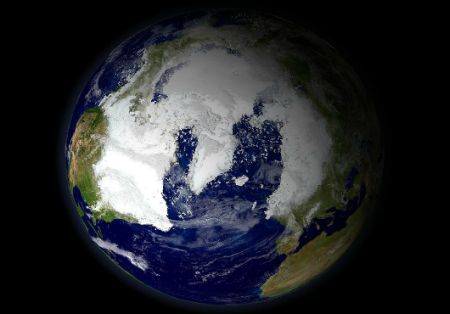
In a paper published this week in the journal Science, researchers report that the deep ocean currents that move heat around the globe stalled or may have stopped at that time, possibly due to expanding ice cover in the Northern Hemisphere.
“The research is a breakthrough in understanding a major change in the rhythm of Earth’s climate, and shows that the ocean played a central role,” said Candace Major, program director in the National Science Foundation (NSF)’s Division of Ocean Sciences, which funded the research.
The slowing currents increased carbon dioxide (CO2) storage in the oceans, leaving less CO2 in the atmosphere. That kept temperatures cold and kicked the climate system into a new phase of colder, but less frequent, ice ages, the scientists believe.
The researchers reconstructed the past strength of Earth’s system of ocean currents by sampling deep-sea sediments off the coast of South Africa, where powerful currents originating in the North Atlantic Ocean pass on their way to Antarctica.
How vigorously those currents moved can be inferred by how much North Atlantic water made it that far, as measured by isotope ratios of the element neodymium bearing the signature of North Atlantic seawater.
Like tape recorders, the shells of ancient plankton incorporate these seawater signals through time, allowing scientists to approximate when currents grew stronger and when weaker.
Over the last 1.2 million years, the conveyor-like currents strengthened during warm periods and lessened during ice ages, as previously thought.
But at about 950,000 years ago, ocean circulation slowed significantly and stayed weak for 100,000 years.
During that period the planet skipped an interglacial–the warm interval between ice ages. When the system recovered, it entered a new phase of longer, 100,000-year ice age cycles.
After this turning point, deep ocean currents remained weak during ice ages, and ice ages themselves became colder.
Ice ages come and go at predictable intervals based on the changing amount of sunlight that falls on the planet, due to variations in Earth’s orbit around the sun.
Orbital changes alone, however, are not enough to explain the sudden switch to longer ice age intervals.
According to one earlier hypothesis for the transition, advancing glaciers in North America stripped away soils in Canada, causing thicker, longer-lasting ice to build up on the remaining bedrock.
Building on that idea, the researchers believe that the advancing ice might have triggered the slowdown in deep ocean currents, leading the oceans to vent less carbon dioxide, which suppressed the interglacial that should have followed.
We use cookies to improve your experience. By continuing to use our site, you accept our Cookies, Privacy Policy,Terms and Conditions. Close X